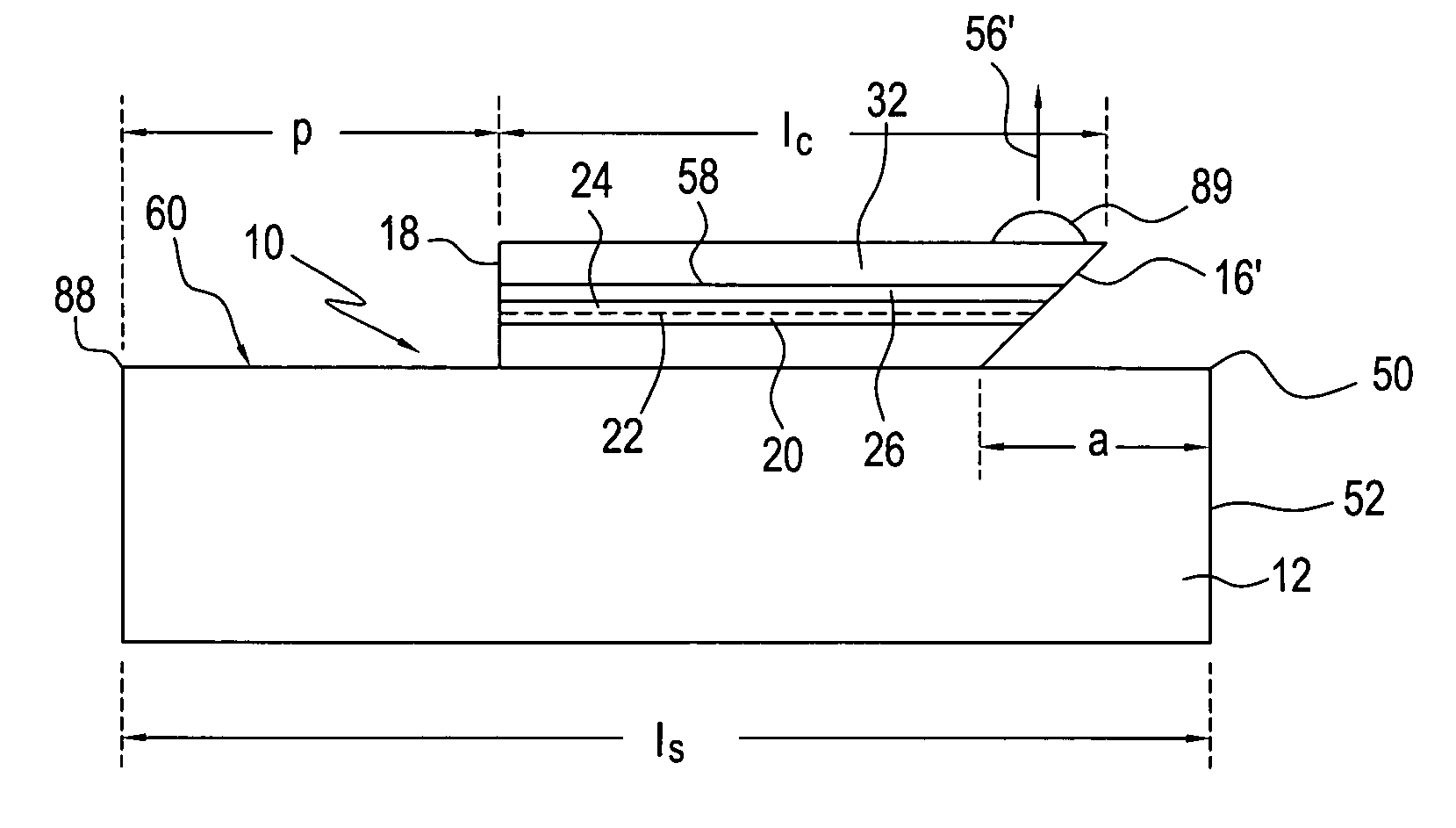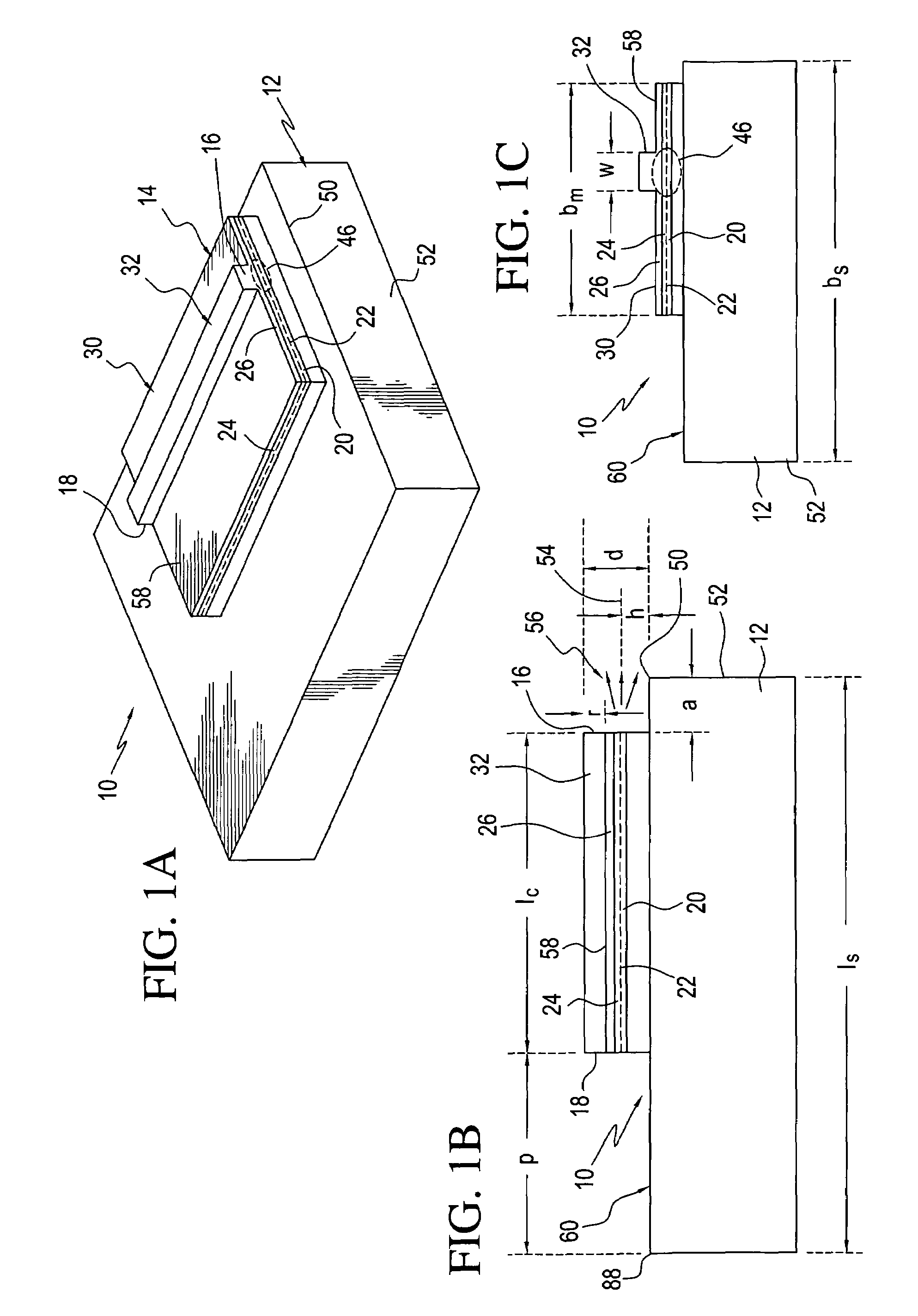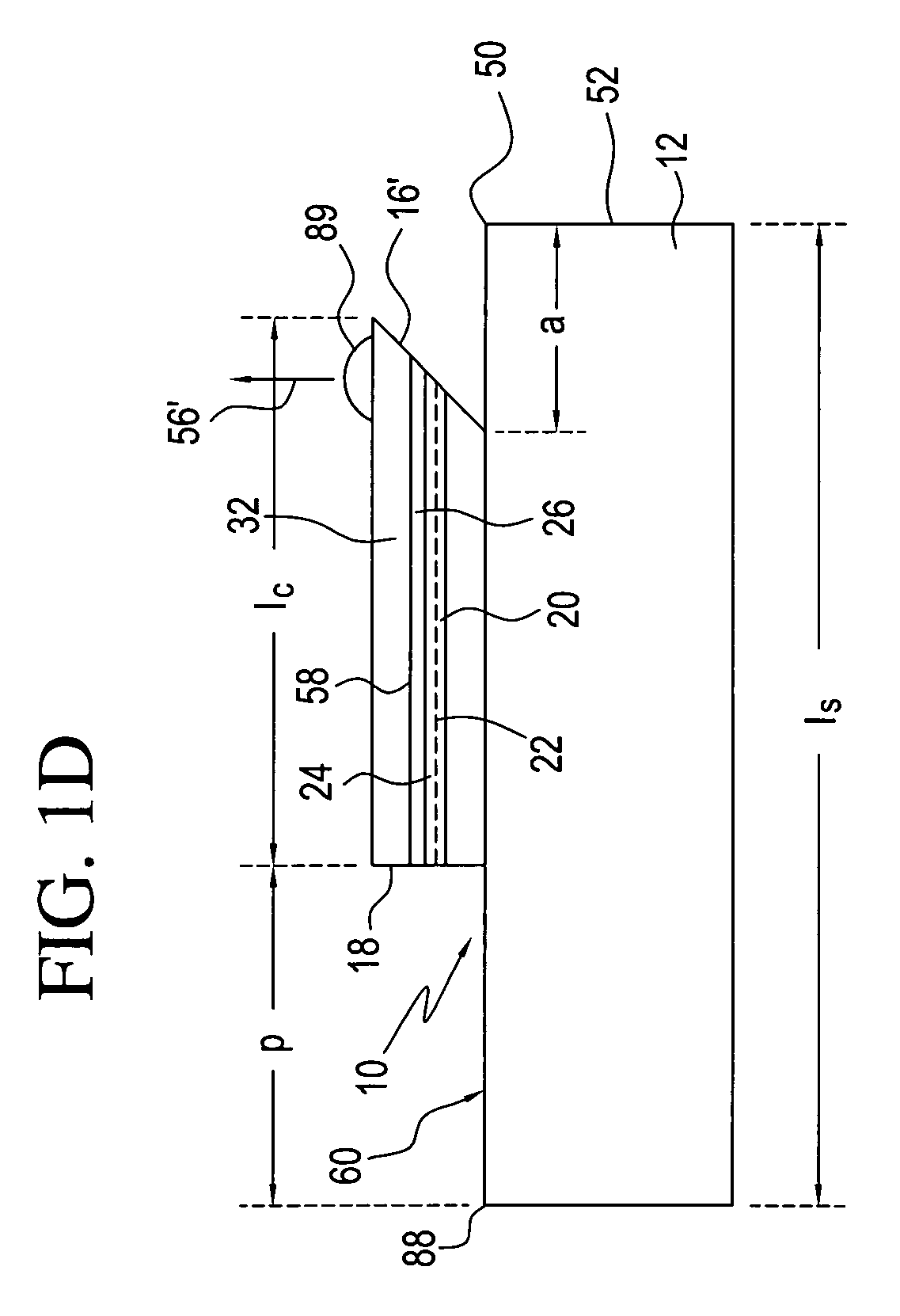Low cost InGaAIN based lasers
a laser and low-cost technology, applied in semiconductor lasers, optical head manufacturing, optical beam sources, etc., to achieve the effects of high defect density, high optical wavefront quality, and reduced yield loss
- Summary
- Abstract
- Description
- Claims
- Application Information
AI Technical Summary
Benefits of technology
Problems solved by technology
Method used
Image
Examples
Embodiment Construction
[0041]Turning now to a detailed description of the invention, FIGS. 1A-1C illustrate a diode laser chip 10, including a substrate 12 supporting an epitaxially grown and etched ridge laser 14 having end facets 16 and 18. The ridge laser is formed by etching of the laser end facets, as is known in the art, with the present laser having a special design geometry. In accordance with the invention, the semiconductor laser structure 14 is epitaxially grown on substrate 12 with at least a lower cladding layer 20, an active layer 22, an upper cladding layer 24, and a contact layer 26. Dry etching through a lithographically defined mask produces a laser mesa 30 of length lc and width bm. Another sequence of lithography and etching is used to form the ridge structure 32 with width w on top of the mesa. While the laser schematically shown in FIGS. 1A-C and described above is a ridge-type design, it is understood that this invention is not limited to ridge laser structures and also applies to o...
PUM
| Property | Measurement | Unit |
|---|---|---|
| angle | aaaaa | aaaaa |
| temperature | aaaaa | aaaaa |
| sizes | aaaaa | aaaaa |
Abstract
Description
Claims
Application Information
 Login to View More
Login to View More - R&D
- Intellectual Property
- Life Sciences
- Materials
- Tech Scout
- Unparalleled Data Quality
- Higher Quality Content
- 60% Fewer Hallucinations
Browse by: Latest US Patents, China's latest patents, Technical Efficacy Thesaurus, Application Domain, Technology Topic, Popular Technical Reports.
© 2025 PatSnap. All rights reserved.Legal|Privacy policy|Modern Slavery Act Transparency Statement|Sitemap|About US| Contact US: help@patsnap.com



